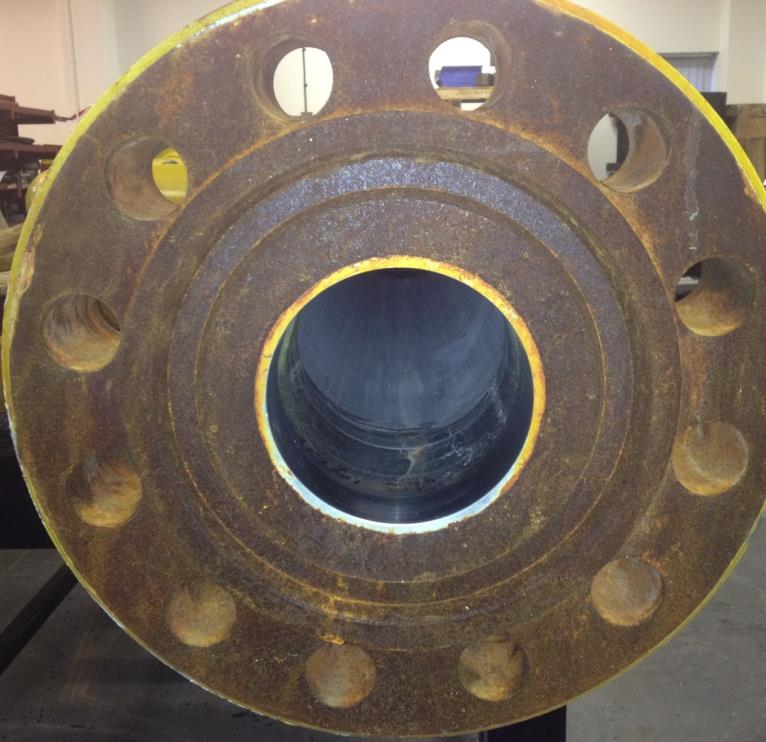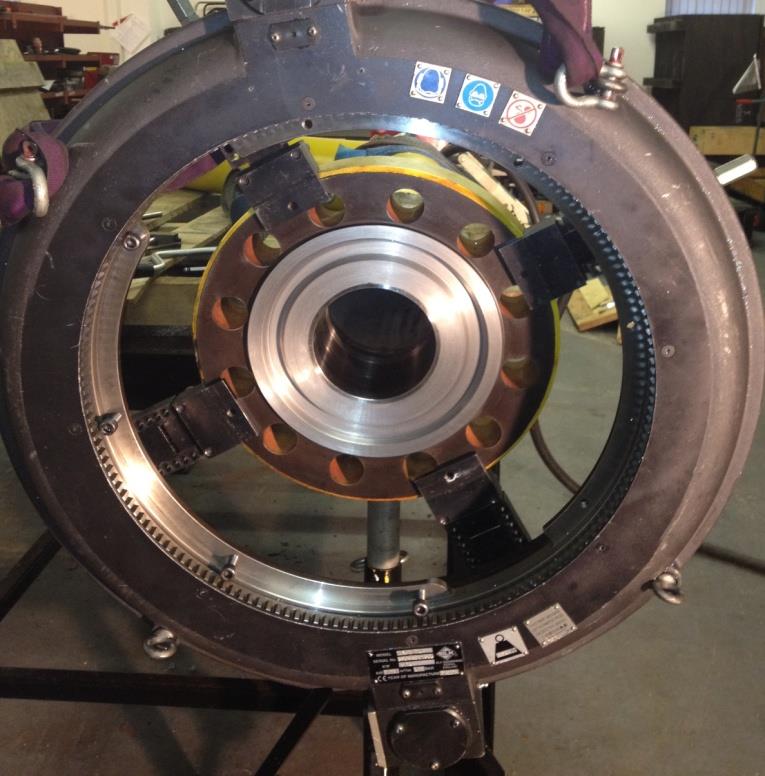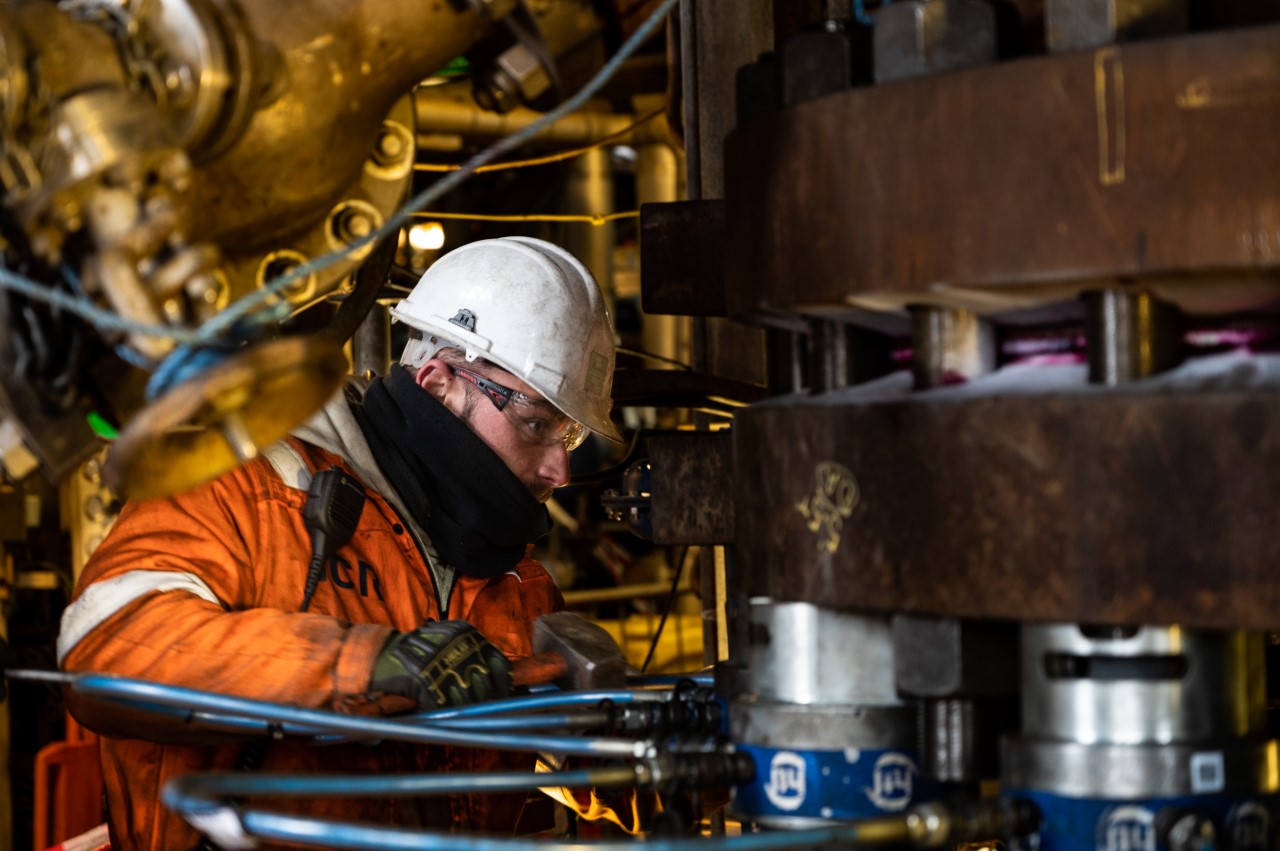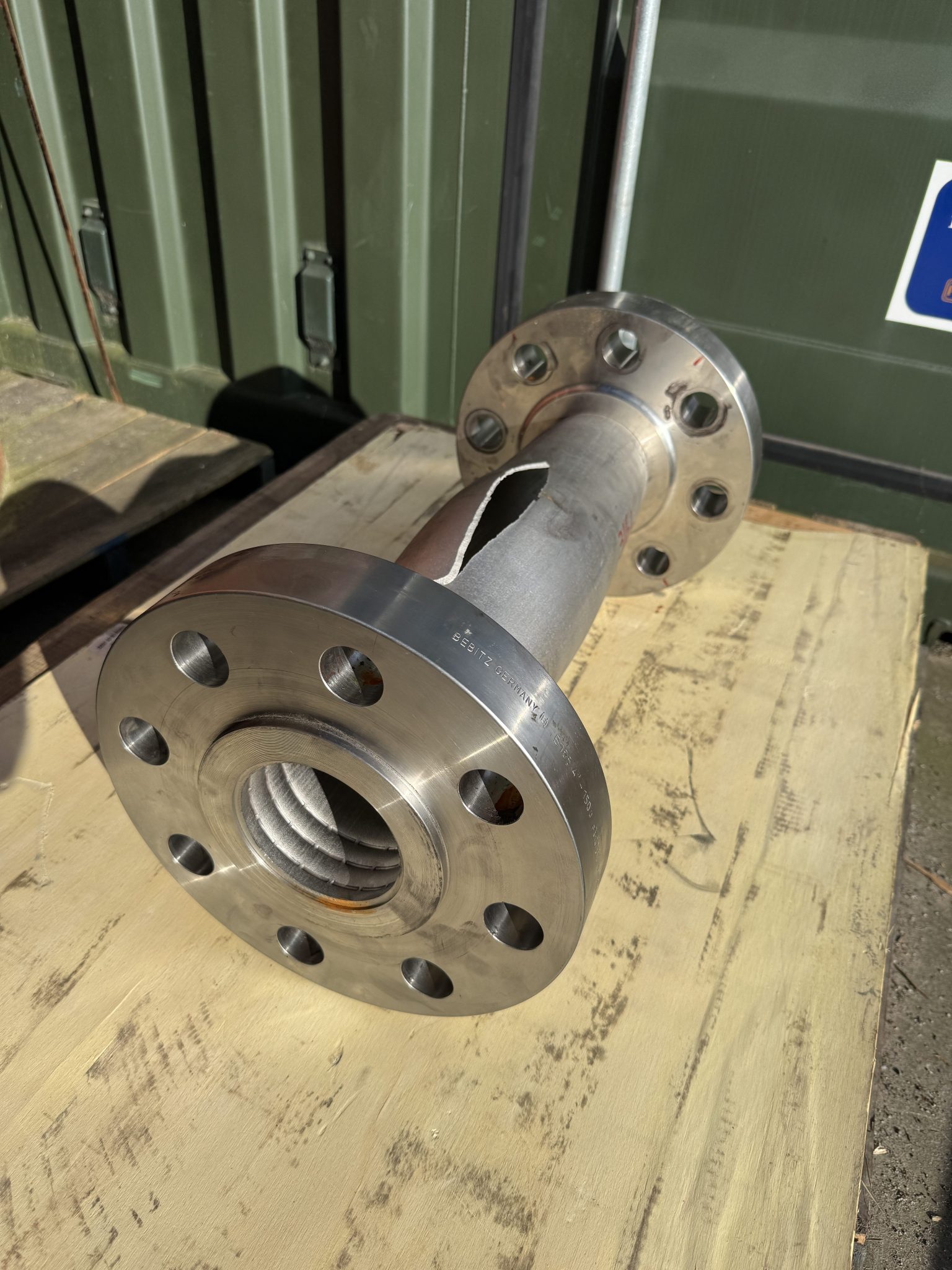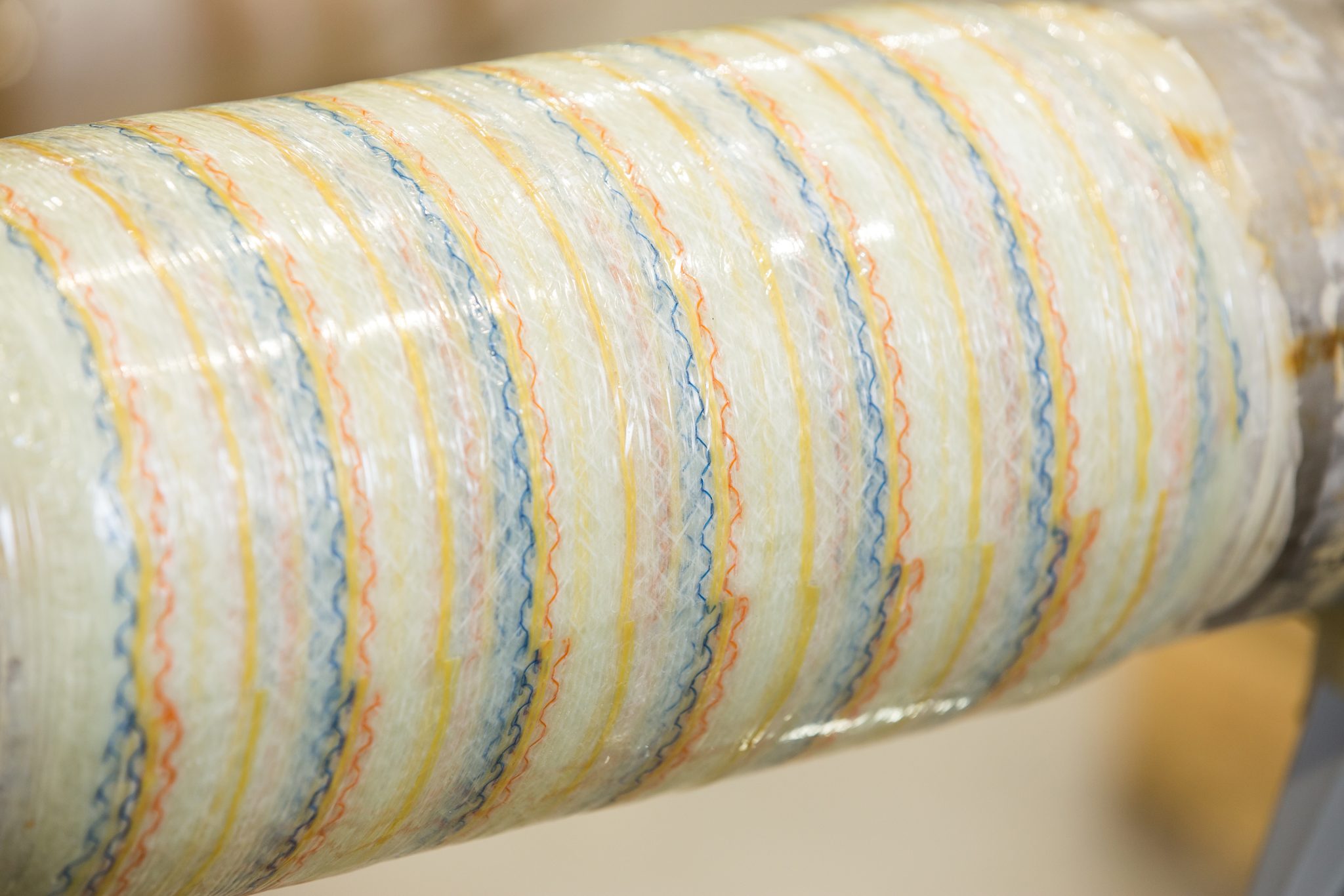Client: Fabrication company
Asset: Tie-in spool
Location: Aberdeen, UK
Client challenge
A fabrication company in Aberdeen required machining of a subsea tie-in spool which had undergone onshore refurbishment. The spool, having been open to the elements, was deemed unfit for installation due to heavy corrosion on the flange sealing faces. With the imminent need for subsea installation, the challenge was to restore the spool’s integrity within a tight timeframe.
What we did
Both 7.1/6” 5K BX156 seal grooves on the spool required machining to eliminate corrosion and pitting, returning the dimensional sizes back to tolerance. The critical aspect was to achieve this with the minimum amount of metal being removal while ensuring the spool met the stated dimensional tolerances. The task had to be carried out within a tight time frame as subsea installation was only days away.
We deployed technicians along with an external mount flange facing machine for machining the faces and angles of the sealing grooves. The corrosion was expertly removed, and dimensions were meticulously measured using ball trammels to guarantee compliance with the necessary tolerances of +/- 0.05mm (0.002”).
Results
The precision machining carried out resulted in significant results and benefits for the client:
Dimensional reports: Detailed dimensional reports were produced for each flange, outlining both pre and post-machining sizes. This meticulous documentation satisfied the project quality plan, providing transparency and assurance of the work’s precision.
Successful hydrotesting: Following the machining process, the spool was returned to the fabricator. It underwent successful hydrotesting, ensuring that the refurbished spool met the required standards for installation load out.
Timely completion: Despite the tight timeframe, our efficient approach allowed for the refurbishment of the spool within the specified schedule. This timely completion enabled the client to proceed with subsea installation without delays.
Our precision machining solution not only addressed the corrosion challenges of the subsea tie-in spool but also provided the client with accurate dimensional data, successful hydrotesting, and adherence to project timelines. This case study underscores the importance of precision in refurbishment processes for critical subsea components.
